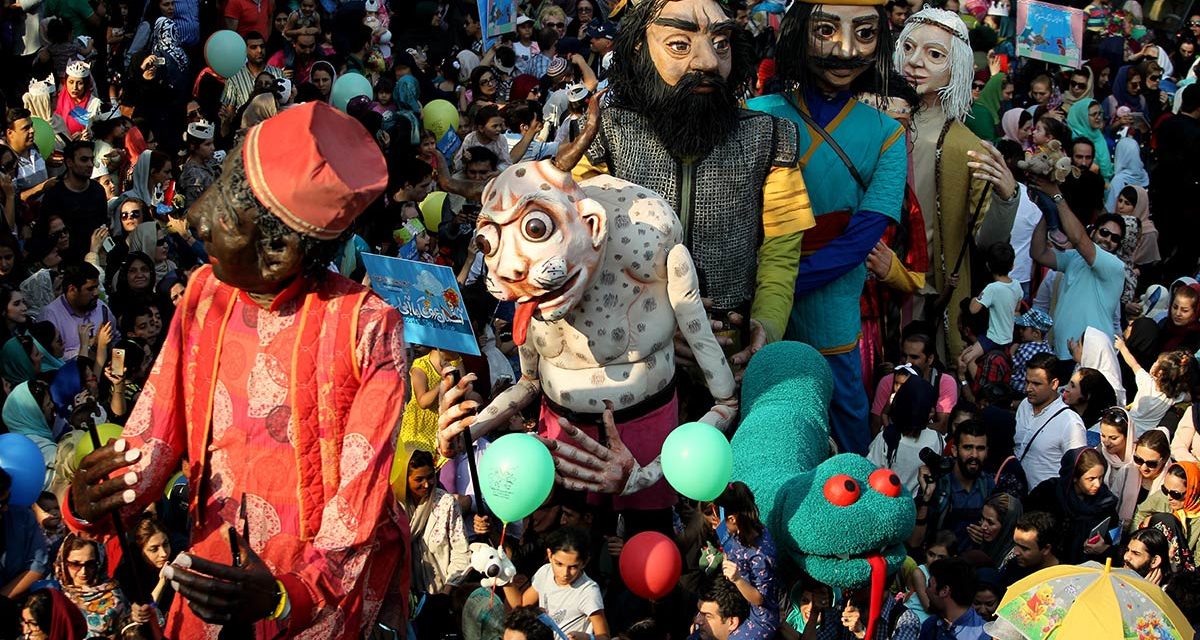A puppet show set to music, dramatizing Iran’s worsening water crisis, will kick off during an international festival being held in the country later this month.
“Kamancheh, Water and Others,” a play directed by Alireza Nassehi, will be performed with the marotte puppets at the 17th International Mobarak Puppet Festival in Tehran, which runs from August 23-29. A marotte is a puppet attached to a wooden stick, whereby the puppeteer controls a central rod with one hand and the other hand becomes a hand of the puppet itself.
The puppet show will be accompanied by songs from the American jazz artist Louis Armstrong, Azerbaijani musician Alim Qasimov, kamancheh player Keyhan Kalhor and vocalist Shahram Nazeri, who will be reciting a modern-day poem written by Sohrab Sepehri, titled “Don’t Muddy the Water.”
The production tells the story of Mr. Foot, a character who wastes a lot of water while taking a shower but is sent on a journey to find water one day after his shower water was abruptly cut.
The purpose of dramatization is to draw people’s attention to the worsening water crisis and drought in Iran, a Caspian region country that has been struggling with severe water shortages for decades. Depending on the expert consulted, different reasons are offered for why Iran suffers from so much of a shortage: Reasons cited include climate change, rapid population growth and overuse of water, wasteful agriculture practices, mismanagement, and poor planning.
An estimated 37 million Iranians in a country of 80 million people are said to be living in water-stressed areas. The average precipitation rate throughout Iran has been lower than the global average for more than a decade. Due to drought and the resulting economic and social crisis, people from the major water-deficit regions of the south are moving to other parts of the country, including the northern provinces, in huge numbers.
Protests have broken out in Iran since the beginning of 2018 over a lack of drinkable water and growing political concerns due to drought. Iranian officials consider the crisis a national security issue. In early July, demonstrators protesting over water scarcity in the cities of the southwestern province of Kuzestan, which borders Iraq, have clashed with police.
According to local media reports, protesters took to the streets in Mahshahr city on July 2 to express support for the residents of nearby Khorramshahr, who have been protesting shortages of drinking water over the past days.
Meanwhile, the head of the Iranian Civil Defense Organization, Gholam Reza Jalali, has accused Iran’s enemies, especially Israel, of intervening in the country’s climate and modifying the weather in Iran in order to create drought.
“Joint teams from Israel and one of our neighboring countries make clouds that are entering Iran,” which, Jalali claims, are unable to produce rain.
With lower water levels within Iranian dams, the country’s ability to generate electricity through its hydropower plants has reached a maximum output of 5,000 MW this summer, far lower than last year’s figure of 9,300 MW, according to IRIB News Agency.
During the protests over the lack of drinking water and power shortages, rumors have swarmed that Iranian water and electricity is being exported to neighboring countries. Energy Minister Reza Ardakanian denies such claims, and said earlier this month that due to the current situation Iran is importing about 700 MW of electricity from Turkmenistan, Azerbaijan and Afghanistan.







 Russian peacekeeping forces, deployed in the Karabakh (Garabagh) region of Azerbaijan since 2020, have commenced their withdrawal from the area.
Russian peacekeeping forces, deployed in the Karabakh (Garabagh) region of Azerbaijan since 2020, have commenced their withdrawal from the area.
 The number of evacuees from flooded areas in Kazakhstan has reached 97,852 people, including about 32,856 children since March 27.
The number of evacuees from flooded areas in Kazakhstan has reached 97,852 people, including about 32,856 children since March 27.
 Azerbaijan officially unveiled the logo for the upcoming 29th session of the Conference of the Parties to the United Nations Framework Convention o...
Azerbaijan officially unveiled the logo for the upcoming 29th session of the Conference of the Parties to the United Nations Framework Convention o...
 The Kazakh authorities have increased their arbitration claims against international oil companies involved in the development of the Kashagan oil ...
The Kazakh authorities have increased their arbitration claims against international oil companies involved in the development of the Kashagan oil ...



